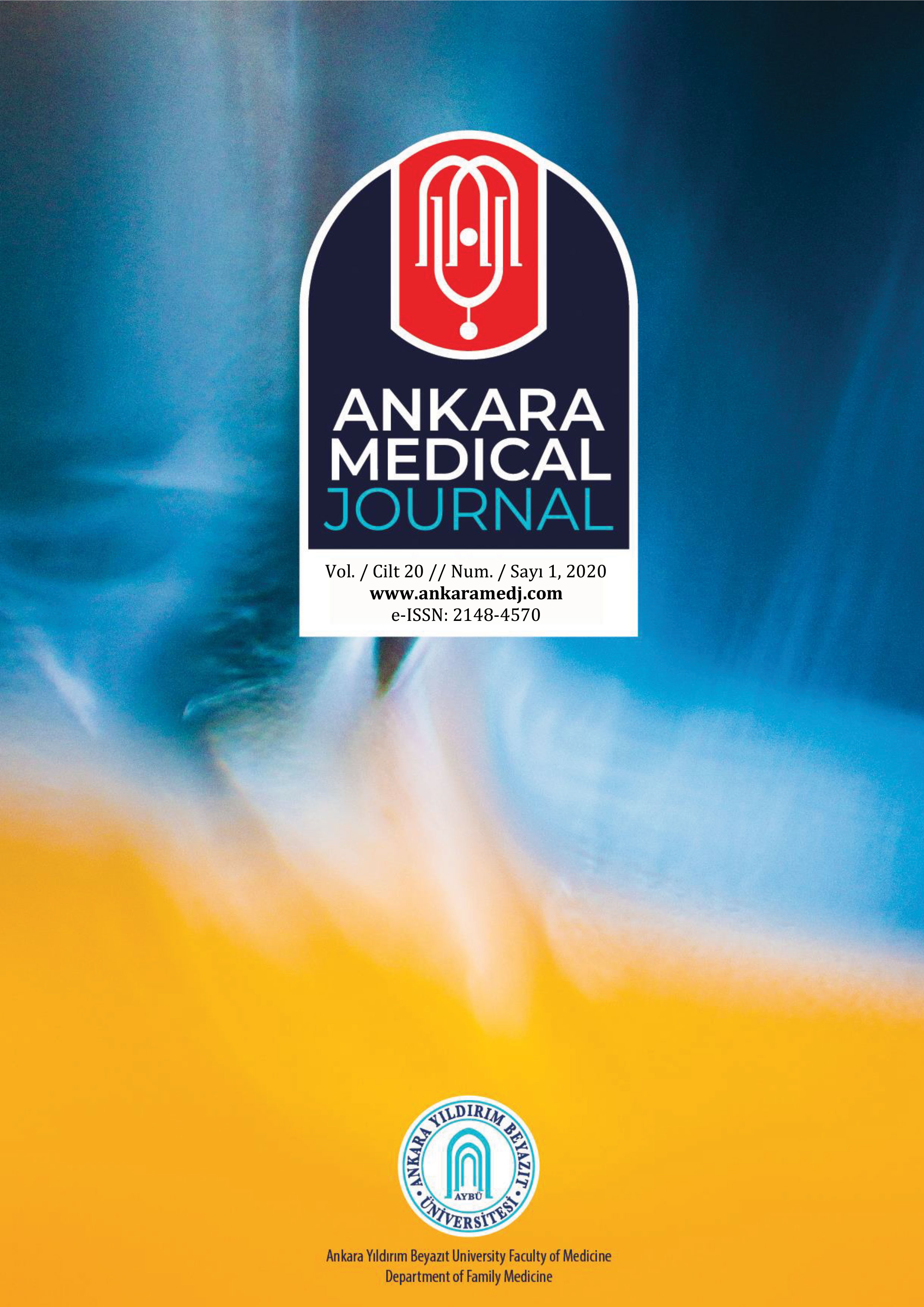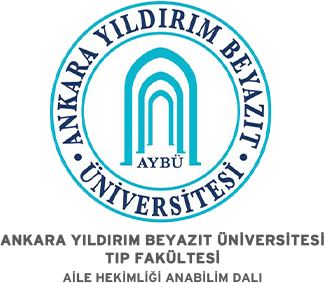Evaluation of Sociodemographic Data, Breast Density, Presence of Menopause and Hematological and Histopathological Findings in Women Diagnosed with Breast Cancer
Özlem Ünal1, Birol Korukluoğlu21Department of Radiology, Faculty of Medicine, Yıldırım Beyazıt University, Ankara, Turkey2Ankara City Hospital, Breast Endocrine Surgery, Ankara, Turkey
INTRODUCTION: Breast cancer is the most common type of cancer in women and accounts for 15% of cancer-related deaths. One of the strongest risk factors of breast cancer development, as well as high breast density, factors such as age, birth, breastfeeding, hormone replacement therapy also affect cancer development. In this study, it was aimed to evaluate the effects of sociodemographic data, breast density, presence of menopause, hematological and histopathological findings in women diagnosed with breast cancer.
METHODS: The examination, surgery and histopathological results of 154 patients who were referred to the Breast Unit and underwent mammography examination and tru-cut biopsy after the examination and diagnosed with cancer were analyzed retrospectively. According to the mammography findings, who underwent tru-cut biopsy due to suspected cancer and subsequently diagnosed as cancer, 154 patients examination, surgery and histopathological results were retrospectively reviewed. 140 patients were included in the study. Breast intensity was recorded from the patients' age, education and marital status, first menstrual age, first gestational age, number of pregnancies, age of first delivery, hormone replacement therapy, and BI-RADS classification results from mammography reports. After obtaining tumor diameter, grade, lymph node metastasis and whether there was lymphovascular invasion from the histopathology report, it was divided into groups according to TNM (tumor- lymph node- metastasis) classification. Neutrophil leukocyte/lymphocyte and platelet/lymphocyte ratios were calculated from the blood count values of the patients.
RESULTS: Of the 140 patients diagnosed with breast cancer, 32 were premenopausal and 108 were postmenopausal. While the mean body mass index (BMI) of premenopausal patients was 26.53 ± 3.05 kg / m2, the BMI of postmenopausal patients was 29.63 ± 5.60 kg / m2 and their BMI was statistically significantly higher than that of premenopausal patients. (p <0.001). It was found that mammographic breast density decreased while the age and body mass index of breast cancer patients increased (p <0.001, p = 0.013 respectively). It was observed that mammographic breast density increased in patients with high gestational age and first birth age (p<0.001). In mammography reporting of postmenopausal patients, BI-RADS was reported more frequently than 5 and 6 premenopausal patients (p=0.03). In mammography reporting of postmenopausal patients, BI-RADS 5 and 6 were reported more frequently than premenopausal patients (p=0.03). The mean platelet count of premenopausal patients, which is one of the hematological parameters, was 257.38 ± 65.70 (thousand), while that of postmenopausal patients was 293.31 ± 75.02 (thousand). The mean platelet / lymphocyte ratio was 131.31 ± 33.76 in premenopausal patients, while it was 161.11 ± 59.26 in post-menopausal patients. Platelet count and platelet / lymphocyte ratio were statistically significantly higher in postmenopausal patients (p=0.011 and p<0.001, respectively). No statistically significant difference was found in neutrophil and lymphocyte count.
DISCUSSION AND CONCLUSION: In conclusion, this study shows that if the platelet / lymphocyte ratio is high in postmenopausal patients with high breast density, this should be considered as a bad prognostic factor for family physicians and clinicians. During the evaluation of patients, breast density, presence of menopause and social-demographic data should also be taken into consideration.
Keywords: Hematologic parameters, Mammography density, breast cancer, menopause.
Meme Kanseri Tanısı Almış Kadınlarda Sosyodemografik Veriler, Meme Yoğunluğu, Menopoz Varlığı ile Hematolojik ve Histopatolojik Bulguların Değerlendirilmesi
Özlem Ünal1, Birol Korukluoğlu21Ankara Yıldırım Beyazıt Üniversitesi Tıp Fakültesi, Radyoloji Ana Bilim Dalı,Ankara2Ankara Şehir Hastanesi, Meme Endokrin Cerrahi Kliniği, Ankara, Türkiye
GİRİŞ ve AMAÇ: Meme kanseri, kadınlarda en sık görülen kanser türüdür ve kansere bağlı ölümlerin %15ini oluşturur. Meme kanser gelişiminin en güçlü risk faktörlerinden biri meme yoğunluğunun fazla olmasının yanı sıra yaş, doğum, emzirme, hormon replasman tedavisi gibi faktörler de kanser gelişimini etkilemektedir. Bu çalışmada meme kanseri tanısı almış kadınlarda sosyodemografik veriler, meme yoğunluğu, menopoz varlığı, hematolojik ve histopatolojik bulguların değerlendirilmesi amaçlanmıştır.
YÖNTEM ve GEREÇLER: Meme Ünitesi birimine yönlendirilen ve mamografi tetkiki yapılan hastalardan, tetkik sonrasında kanser şüphesi nedeniyle tru-cut biyopsisi yapılan ve kanser tanısı alan 154 hastanın tetkik, ameliyat ve histopatolojik sonuçları retrospektif olarak incelendi. 140 hasta çalışmaya dahil edildi. Hastaların yaşı, eğitim ve medeni durumu, ilk adet yaşı, ilk gebelik yaşı, gebelik sayısı, ilk doğum yaşı, hormon replasman tedavisi görüp görmediği ve mamografi raporlarından da BI-RADS sınıflama sonucu ile meme yoğunluğu kaydedildi. Histopatoloji raporundan tümör çapı, derecesi, lenf nodu metastaz varlığı ve lenfovasküler invazyon olup olmadığı elde edildikten sonra TNM (tümör-lenf nodu-metastaz) sınıflamasına göre gruplara ayrıldı. Hastaların kan sayımı değerlerinden nötrofil lökosit/lenfosit oranı ve trombosit/lenfosit oranları hesaplandı.
BULGULAR: Meme kanseri tanısı alan 140 hastanın 32si premenopozal, 108i postmenopozal idi. Premenopozal hastaların vücut kitle indeksi (VKİ) ortalaması 26,53±3,05 kg/m2 iken, postmenopozal hastaların VKİnin 29,63±5,60 kg/m2 olduğu ve bu hastaların VKİsinin premenopozal hastalarınkinden istatistiksel olarak anlamlı şekilde yüksek olduğu görüldü (p<0,001). Meme kanserli hastaların yaş ile vücut kitle indeksi artarken mamografide meme yoğunluğunun azaldığı saptandı (p<0,001, p=0,013 sırasıyla). İlk gebelik ve ilk doğum yaşının ileri olduğu hastalarda mamografik meme yoğunluğunun arttığı tespit edildi (p<0,001). Postmenopozal hastaların mamografi raporlamasında BI-RADS 5 ve 6 premenopozal hastalardan daha sıklıkla rapor edildi (p=0,03). Hematolojik parametrelerden premenopozal hastaların kan sayımındaki trombosit sayısı ortalaması 257,38±65,70 (bin) iken postmenopozal hastaların trombosit sayısı ortalaması 293,31±75,02 (bin) olarak saptandı. Trombosit sayısı/lenfosit sayısı oranının ortalaması premenopozal hastalarda 131,31±33,76 iken postmenopozal hastalarda bu oranın ortalamasının 161,11±59,26 olduğu görüldü. Postmenopozal hastaların trombosit sayısı ve trombosit/lenfosit oranı istatistiksel olarak anlamlı şekilde daha yüksekti (sırasıyla p=0,011 ve p<0,001). Nötrofil ve lenfosit sayısında istatistiksel olarak anlamlı fark saptanmadı.
TARTIŞMA ve SONUÇ: Sonuç olarak, bu çalışma meme yoğunluğu fazla olan postmenopozal hastalarda trombosit/lenfosit oranı yüksek ise aile hekimleri ve klinisyenler açısından bu durumun kötü bir prognostik faktör olarak değerlendirilmesi gerektiğini göstermektedir. Hastalar değerlendirilirken meme yoğunluğu, menopoz varlığı ve sosyo-demografik veriler de ayrıca göz önünde bulundurulmalıdır.
Anahtar Kelimeler: Hematolojik parametreler, meme yoğunluğu, meme kanseri, menopoz.
Manuscript Language: Turkish
(1759 downloaded)





